In just a few short years, the idea of free college has moved from a radical idea to mainstream Democratic thinking. President Biden made free college one of his core campaign planks, and one that the first lady has been promoting for years. In his recent address to Congress, the president also signaled that he is ready for legislative action on a scaled-back version of the idea as part of his American Families Plan.
Two weeks ago, the nonprofit College Promise (CP)—led by Martha Kanter, who served as President Obama’s undersecretary for education—also released a proposal that will influence the free college debate. (Full disclosure: I previously advised the Biden campaign and presently advise CP, but have received no compensation for these efforts.)
In today’s polarized environment, the free college idea stands out for its bipartisan support. A majority of self-identified Republicans has supported the notion of free college in some polls. In fact, one of the first such statewide programs was put in place by Bill Haslam, the former Republican governor of Tennessee. While this could go the way of Obamacare, which faced strong GOP congressional opposition despite the law’s origins with Republican Mitt Romney, free college seems different. Biden’s latest plan only applies to community colleges, which focus on career and vocational education of the sort Republicans support, as opposed to universities, which many Republicans view as hostile battlegrounds in a culture war.
But I am less interested in the politics than the evidence of effectiveness. I have studied college access for many years and run two randomized control trials of financial aid, which produced some of the first causal evidence on free college in Milwaukee. Two years ago, Brookings released the first installment of the Milwaukee work, which I carried out with a team of researchers. Since then, we have collected more data and learned more about how students responded over time. Below, I summarize our just-released study (co-authored with Jonathan Mills), compare our results to other financial aid programs, and then discuss implications for the Biden and CP proposals. Consequently, I conclude that the evidence increasingly favors free college and “open access aid” more generally.
What Did We Learn in Milwaukee?
I developed The Degree Project (TDP) in 2009 as a demonstration program in partnership between the nonprofit Ascendium (then known as the Great Lakes Higher Education Corporation and Affiliates) and Milwaukee Public Schools (MPS). TDP offered all first-time 9th graders in half of MPS high schools $12,000 for college as “last-dollar” aid. Students could use the funds for college if they graduated from high school on time with a GPA of 2.5 and a class attendance rate of 90%. Also, as is the norm with free college programs, students had to fill out the FAFSA and have at least one dollar of unmet need. The aid could be used to attend any of the 66 public, in-state, two- or four-year colleges in Wisconsin. Ascendium provided up to $31 million to fund the grant and, as the main program administrator, sent regular letters to remind students about the program and its requirements. The organization also worked with school counselors to support students becoming eligible for the funds and preparing for college.
TDP was announced to students in the fall of 2011. Using anonymized data, we then tracked students’ high school, college, and life outcomes for eight years, and we recently received data extending through when students were roughly 22 years old. As a rare randomized trial, we could estimate the effects by comparing the control and treatment group outcomes. Here is what we found:
- For students who met the performance requirements, the program increased graduation from two-year colleges by 3 percentage points. This might seem small, but the denominator here is comprised of low-income 9th graders. Half of the control group did not even graduate from high school, let alone college. The effect amounts to a 25% increase in two-year degrees.
- The framing and design of the program as free two-year college changed student decisions in ways consistent with what free college advocates suggest. The $12,000 maximum award amount was selected because it was sufficient to cover tuition and fees for a two-year college degree. The fact that TDP made two-year college free, but only reduced the cost of four-year college, was clearly communicated to students. This appears to explain one of our main results: Student enrollments shifted from four-year to two-year colleges. This is noteworthy given that students could use the funds at either two- or four-year colleges. In fact, students likely would have been able to use more of the $12,000 if they had shifted to four-year colleges. The only plausible reason for shifting to two-year colleges is that they were really attracted to the idea of free college.
- The “early commitment” nature of the program had some modest positive effects on some high school outcomes. Students learned about TDP in their 9th grade year, giving them time to change their high school behaviors and college plans. Although it did not improve high school academic achievement, we find that TDP increased college expectations and the steps students took to prepare for college. TDP recipients also reported working harder because of the program (even though this did not show up in the academic measures). This highlights the fact that free college might also help address not only college-going rates, but the long-term stagnancy in high school outcomes.
- The merit requirements undermined the program’s effectiveness. Though the 2.5 GPA and 90% attendance and other requirements were arguably modest, only 21% of eligible students ended up meeting them. So, they ended up excluding many students. We also tested the two main ways that the merit requirements could have been helpful: (a) merit requirements might provide incentives for students to work hard during high school and better prepare for college, and (b) merit requirements might target aid to students who respond to it most. We find no evidence of either benefit. While students did work harder (see point [3] above), this appears to be due to other elements of the program, not the merit requirements.
Overall, these results suggest that aid is most effective when it is “open access”—that is, aid with early commitment and free college framing, but no merit requirements.
What about the evidence beyond Milwaukee?
Our study also reviews other research on financial aid, including federal aid, state merit aid programs, and the newer “promise scholarship” programs that mimic free college. Our study is not alone in finding that financial aid improves student outcomes. In fact, the vast majority of the most rigorous studies find positive effects on college attendance and college graduation. Given the strong average benefits of college, we can expect follow-up studies to show effects on employment earnings, voting, and other outcomes.
What about the costs? Open access aid is more expensive to be sure. More students receive aid and the aid levels per students are larger than traditional financial aid. Is it worth it? Our analysis suggests it is. We carried out new cost-benefit analyses of multiple programs, including TDP, but also other actively studied programs in: Kalamazoo, Michigan; Knox County, Tennessee; Pittsburgh, Pennsylvania; and one statewide program in Nebraska. We also used estimates of the average effects of aid taken from prior literature reviews. All of these programs pass a cost-benefit test. That is, the effects on college outcomes, and the effects of college outcomes on future earnings, is much larger than the cost to the government and society as a whole. Moreover, it appears that benefits-per-dollar-of-cost are at least as high with open access aid as with more restricted programs. This means that open access aid provides greater total benefits to the community as a whole.
Back to the Free College Proposals
What do these results mean for President Biden’s and CP’s proposals? The table below provides a side-by-side comparison. The main difference is the level of detail. This reflects that the CP plan was designed to align with, and flesh out, the Biden campaign proposal. Perhaps the only substantive difference is that the CP proposal (and the Milwaukee program) includes private colleges. The Biden campaign documents exclude private colleges, though the American Families Plan just says “free community college,” signaling alignment with the CP plan. Both proposals are clearly in the category of open access aid.
| Biden Campaign Proposal | College Promise | |
|---|---|---|
| Student eligibility | · 2y college: No income requirements · 4y college: Family AGI < $125,000 | · 2y college: No income requirements · 4y college: Family AGI < $125,000 · Complete FAFSA · Part-time or full-time · Work requirements optional · State requirements on students “kept to a minimum” |
| College eligibility | · Public only | · Public and private · Title IV eligible · Meet accountability requirements based on College Scorecard |
| State-Federal Contributions | · 67% of costs from the federal government | · Public colleges: Federal govt contributes 75% of partnership funds; 25% from states · Private colleges: Partnership covers up to 50% of the cost per credit (capped at state avg cost per credit in public colleges); institutions cover remainder |
| Other | · First-dollar (covers more than tuition and fees for some very-low-income students) |
There are numerous similarities between these provisions and the Milwaukee program that my team and I studied. All three programs make two-year college free (or nearly so) for all students without income requirements and through early commitment of aid. All three require the FAFSA and high school graduation. Importantly, unlike both the Biden and CP proposals, the Milwaukee program had merit requirements, which undermined its success. This is partly why our evidence is so relevant to the current debate.
Some might wonder why the president has scaled back the proposal to just free community college. This reflects that the idea of free college—even the “scaled back” version—is such a marked departure from past policy, especially at the federal level. Free community college alone would still be arguably the largest shift in federal higher education policy in the past half-century.
Caveats and Concluding Thoughts
We cannot make policy from evidence alone, but it can and should play a key role. Sometimes, policy ideas have such limited evidence of effectiveness that it is difficult to make any plausible case for a large-scale, national program. In other cases, there is enough promise for pilot studies and competitive grants to establish efficacy. With free college, we seem to be well beyond that point. In addition to decades of results on general financial aid programs, we have a growing number of studies on state and local programs that all show positive evidence—the “laboratory of democracy” at work. The idea of a large, federal free-college program therefore has more and more credibility.
A decade ago, it was not at all obvious that this is what the evidence would show. There was really no evidence on free college programs when we started this project back in 2009. Also, there were good reasons to expect that such a large increase in aid would suffer from “diminishing returns”—the idea that the next dollar is less effective than the previous one. This could have made free college more costly than the benefits could justify. Now, we know better.
I do still worry a bit about other factors and challenges. For example, the above analyses can only capture the immediate effects of financial aid, yet a federal free college program is such a marked departure in policy that it could alter political and market forces operating on higher education in unpredictable ways, perhaps even lowering college spending and quality. Also, if the proposal remains focused on community colleges, then this will shift students out of four-year colleges and into colleges that currently have very low completion rates. There are also other ways to increase college affordability and access that do not require free college (e.g., increased Pell Grants and income-based loan repayment), some of which target funds more narrowly to the most disadvantaged students. And there are many details to be worked out as the president’s allies in Congress try to generate sufficient support without (a) sacrificing core principles, or (b) creating new problems that can arise when grafting new federal programs on to widely varying state contexts.
Still, it is not often that an idea comes around that addresses a widely acknowledged problem and has both research support and a fair degree of bipartisan political support. The stars seem aligned to make some form of national free college a reality. The more evidence we see, the more that would seem to be a step forward.
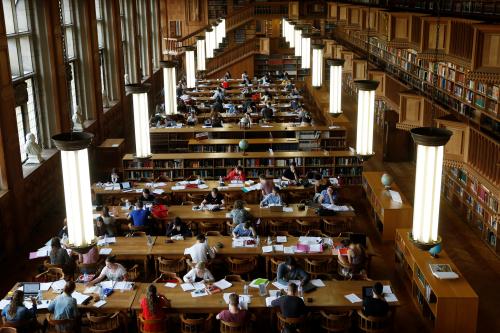
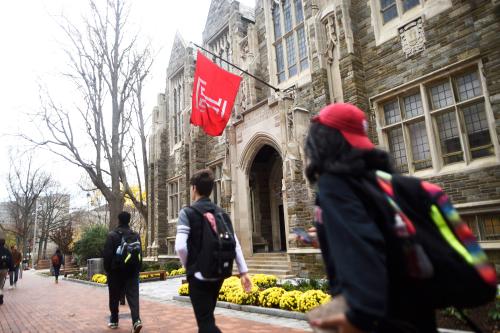
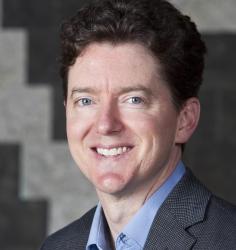
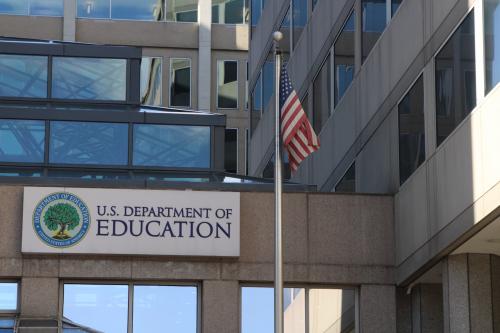
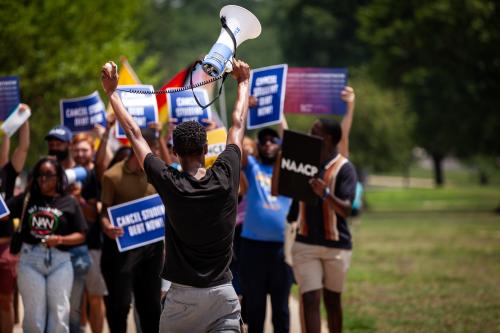
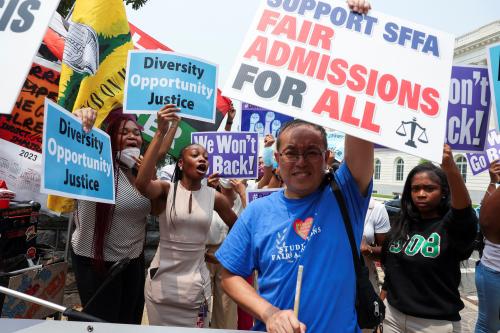
Commentary
Is free college a good idea? Increasingly, evidence says yes
May 10, 2021